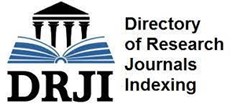Subject Area
Trauma, Thoracolumbar junction
Document Type
Original Study
Abstract
Background Data: The optimal treatment of unstable thoracolumbar spine due to trauma, tumors, and tuberculous spondylitis remains controversial. Treatment goals of thoracolumbar corpectomy are: to prevent neurological deterioration; enhance neurological recovery; stabilization, and to prevent late pain and deformity.Purpose: This retrospective study was conducted to determine the safety and efficacy of stabilization using titanium mesh cage reconstruction filled with autogenous bone graft and anterior plating after thoracolumbar corpectomy due to trauma, tumors or tuberculous spondylitis. Study Design: A retrospective clinical case study. Patients and Methods: A series of patients underwent reconstruction of the anterior column after thoracolumbar corpectomy between June 2006 and June 2011 were reviewed. Sixteen patients underwent reconstruction using titanium mesh cages, and retrospectively analyzed data from the medical records and radiographs including immediate postoperative and latest follow up. The etiology due to trauma in ten cases, tuberculosis in three cases, metastasis in two cases and myeloma in one case. An average duration of follow up was 18 months [ 8-58 months ], single level reconstruction done in trauma and tumor cases, two level corpectomy done in tuberculous spondylitis cases. The degree of kyphosis, construct height and the subsidence of the cage in relation to the vertebral endplates were measured preoperatively, early post operative, and at the latest follow up. The surgical approach was thoracoabdominal in 10 cases and retroperitoneal in 6 cases. Results: Neurological recovery in our study; 4 patients were neurologically intact, Frankel grade E on admission , and all of them remains intact postoperatively. Of the 6 patients with Frankel D on admission, all had recovered full motor and sensoryfunction. Of the 6 patients with Frankel C on admission, three improved one grade, the other three improved two grades. The mean construct height of the involved vertebrae before surgery was 41 mm and the mean construct height immediateafter surgery and at follow up were 47 and 44 mm respectively. Solid fusion was observed in all patients, there were no hardware failure. The sagittal alignment of the fractured segment was satisfactorily restored immediately after surgery as a significant decrease in the local kyphotic angle. Conclusion: Anterior instrumentation is an effective and safe treatment for thoracolumbar instability by demonstaring satisfactory clinical and radiological outcomes. (2012ESJ028)
Keywords
thoracolumbar, Corpectomy, anterior column reconstruction
How to Cite This Article
Abdeen, Khaled and Alghazaly, Mohammed
(2012)
"Anterior Column Reconstruction Using Titanium Mesh Cages after Thoracolumbar Corpectomy: Clinical and Radiological outcome,"
Advanced Spine Journal: Vol. 4
:
Iss.
1
, Article 3.
Available at: https://doi.org/10.21608/esj.2012.3799























